Results
-
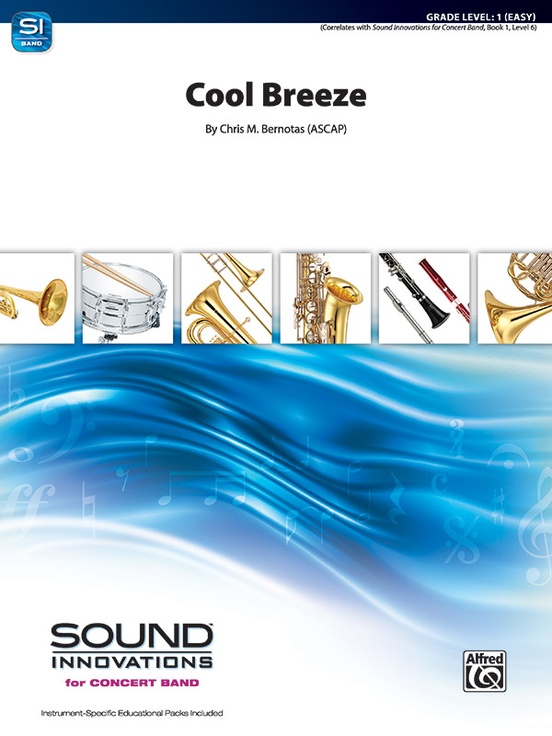 £53.95
£53.95Cool Breeze (Concert Band - Score and Parts) - Bernotas, Chris M.
There is nothing like sitting outside in the spring or fall, relaxing and enjoying a cool breeze! With Cool Breeze by Chris M. Bernotas students will be adding their own "coolness," as they can have the chance play a solo! Students can play the written solo (included on the Educational Pack) or make up their own! The piece offers a fantastic opportunity to help students become familiar with swing-style rhythms and harmonies. Duration: 2.30
Estimated dispatch 7-14 working days
-
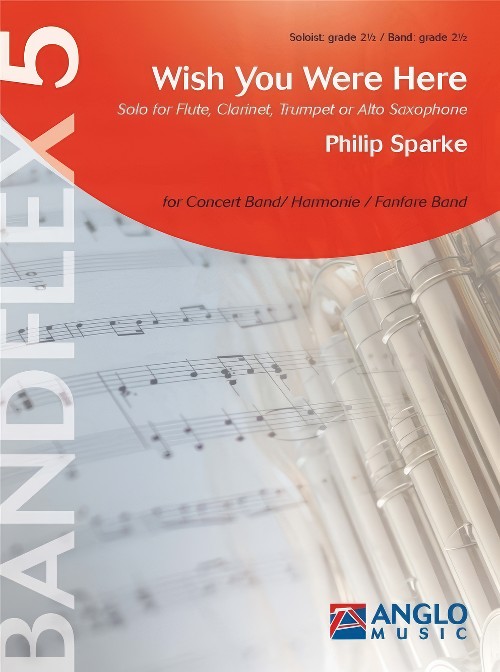 £60.99
£60.99Wish You Were Here (Flexible Solo with Flexible Ensemble - Score and Parts) - Sparke, Philip
A chance to feature a star soloist! The solo part can be played by either flute, clarinet, alto sax or trumpet. The band can also benefit by learning the importance of accompanying sympathetically.Duration: 2.30
Estimated dispatch 7-14 working days
-
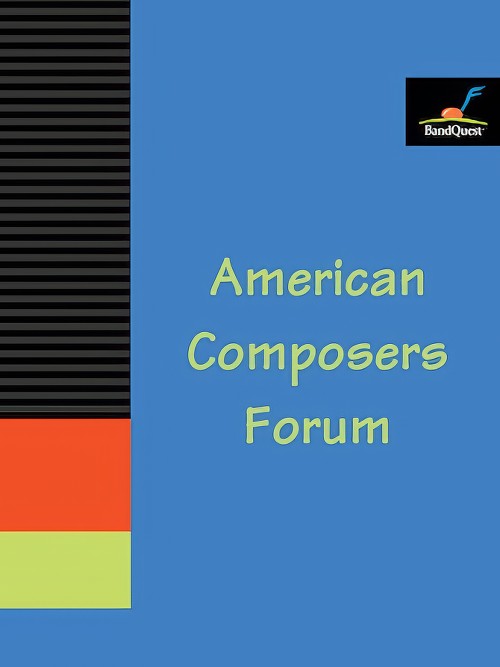 £79.99
£79.99Scalin' and Wailin' (Concert Band - Score and Parts) - Duffy, Thomas
Scalin' and Wailin' is a flexible, fun piece written with a differentiated instruction model. Three different difficulty levels meet students where they're at in their development and allows space for each to grow. This piece is also ideal for educators and conductors looking for "side by side" programming - younger ensembles can all play within the easiest group and more advanced ensembles can play within the more difficult groups, all fitting together in one energetic piece. Celebrate BandQuest's 20th anniversary with this special release, and find what works for your ensemble!
Estimated dispatch 7-14 working days
-
 £72.00
£72.00We Shall Overcome (Concert Band - Score and Parts) - Galvin, Lisa
The beloved gospel song, "We Shall Overcome," which became the great anthem of the civil rights movement, is now available in this inspiring and very playable arrangement by Lisa Galvin. Providing an inspiring backdrop for healing and triumph, this timely piece is appropriate for any performance, and can offer a number of learning opportunities across the curriculum. Whatever life's obstacles may be, your advancing musicians can help conjure a sense of hope and fortitude with lush harmonies and expressive transitions that build to an exuberant finish. Powerful! Duration: 3.45
Estimated dispatch 7-14 working days
-
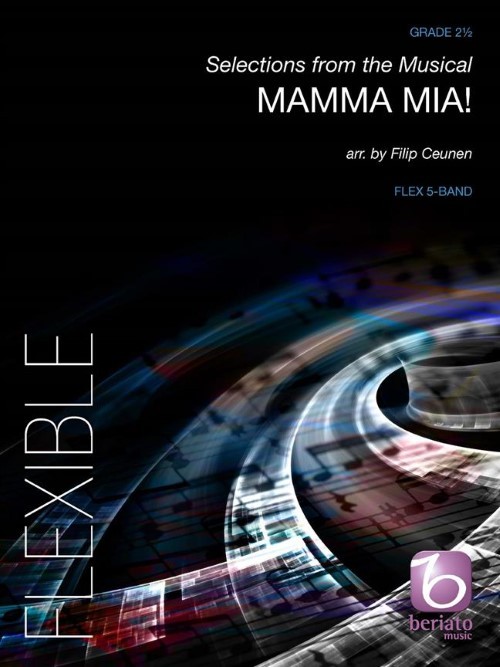 £84.99
£84.99Mamma Mia!, Selections from (Flexible Ensemble - Score and Parts) - Ceunen, Filip
Some bands and their music are everlasting. A good example of such a group can be found in ABBA! The fact that a popular musical was based on ABBA songs is the best proof you can get. Even today, both young and old sing along to the international hits of this Swedish group! Filip Ceunen took the very best songs and created an excellent and playable medley scored for flexible ensemble. Be prepared for an audience singing or humming along with such classic songs as 'Mamma Mia', 'Dancing Queen', 'Fernando', 'The Winner Takes It All', and of course 'Money, Money, Money'.Duration: 5.00
Estimated dispatch 7-14 working days
-
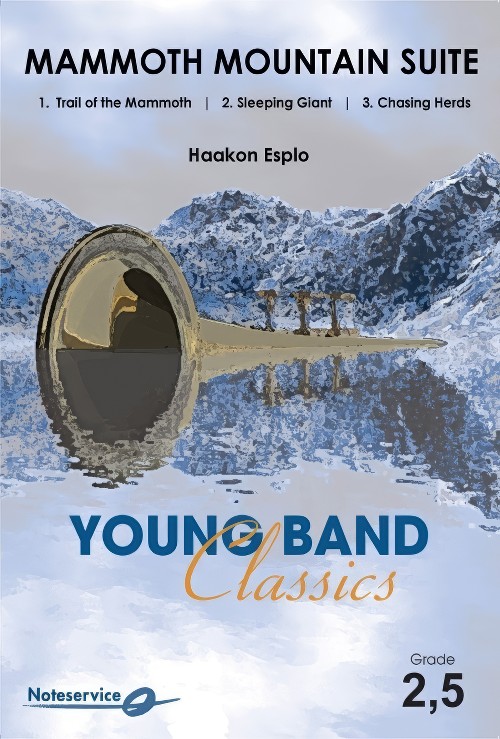 £85.00
£85.00Mammoth Mountain Suite (Concert Band - Score and Parts) - Esplo, Haakon
Suite in Three Movements. Mammoths were a family of elephants that, with one exception, died out at the end of the last ice age. Their closest living relative is the Asian elephant. In many places in the world one can find mammoth remains. In Norway (especially in Gudbrandsdalen), 20 discoveries of teeth and skeletal remains have been made after mammoths that lived here between 40,000 and 50,000 years ago. On cave paintings and carvings you can see many pictures of mammoths with other animals. Pictures of killed mammoths have also been found with humans. Mammoth Moutain Suite describes a bunch of hunters looking for mammoths. Imagine the majestic animals, what it felt like to see the herd in the mountains and what it sounded like when the 6 ton heavy and 3.5 meter tall mammoths were on the run. Duration: 7.30
Estimated dispatch 7-14 working days
-
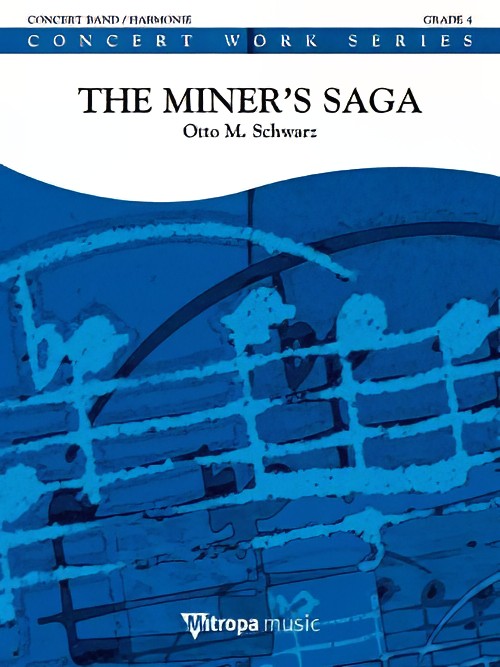 £159.99
£159.99The Miner's Saga (Concert Band - Score and Parts) - Schwarz, Otto M.
This programmatic piece is about a simple miner by the name of Gottlieb Bumler and his pact with the devil. In the program note one can follow each step of the story so you can almost hear the events as if they were happening in front of you! This cinematic piece is full of sound effects, great brass sequences, solid percussion and virtuosic winds. An ideal piece for a thematic concert, or a challenging choice for a contest.Duration: 11.00
Estimated dispatch 7-14 working days
-
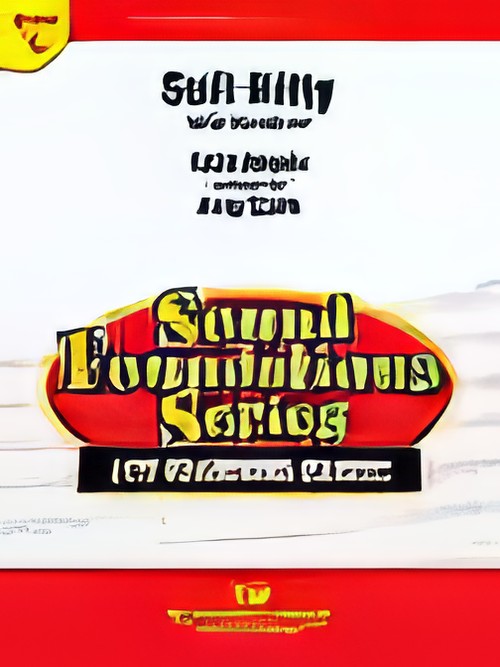 £45.00
£45.00Soft Kitty (Concert Band - Score and Parts) - Newlin, Edith - Clark, Andy
Your beginning band students will love Andy Clark's arrangement of this favorite lullaby, recently featured in many episodes of two very popular television series. Using only the first five notes students learned in beginning band instruction, every section of the band gets a chance to shine. The variations demonstrate how a melody can be played in different styles, providing excellent teaching opportunities. The brief introduction can be performed as a solo, duet or full section of trumpets, clarinets or saxophones. Fun for everyone at your beginners' first concert! Duration: 1.15
Estimated dispatch 7-14 working days
-
 £75.00
£75.00Footsteps (Concert Band - Score and Parts) - Wilson, Dana
The term footsteps can have different meanings. It can suggest everything from gently walking, to mysterious uncertainty, to massive marching. This evocative work by Dana Wilson moves progressively through a spectrum of images and textures, gradually gaining in power and drama throughout.Duration: 4:45
Estimated dispatch 7-14 working days
-
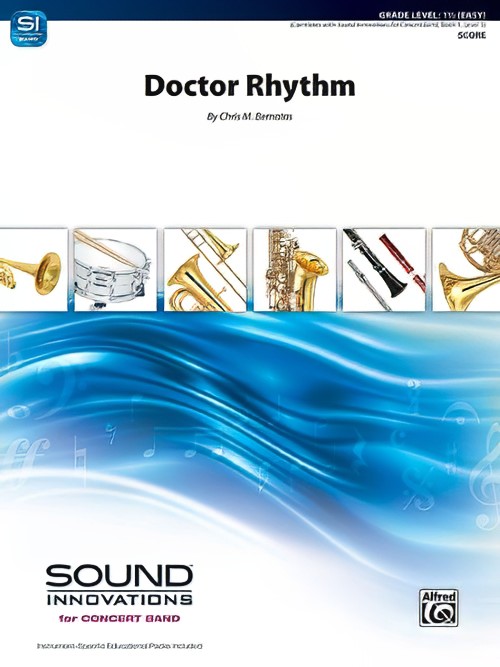 £44.50
£44.50Doctor Rhythm (Concert Band - Score and Parts) - Bernotas, Chris M.
This is a rocking, fun piece that directors can utilise to teach students to play with a steady and strong beat. It has a bluesy-rock melody, groove accompaniment, and-of course-cowbell! This piece can be a worthwhile vehicle for students to develop understanding of eighth note subdivisions, articulations, dynamics, and phrasing in a fun way.Duration: 2:10
Estimated dispatch 7-14 working days
